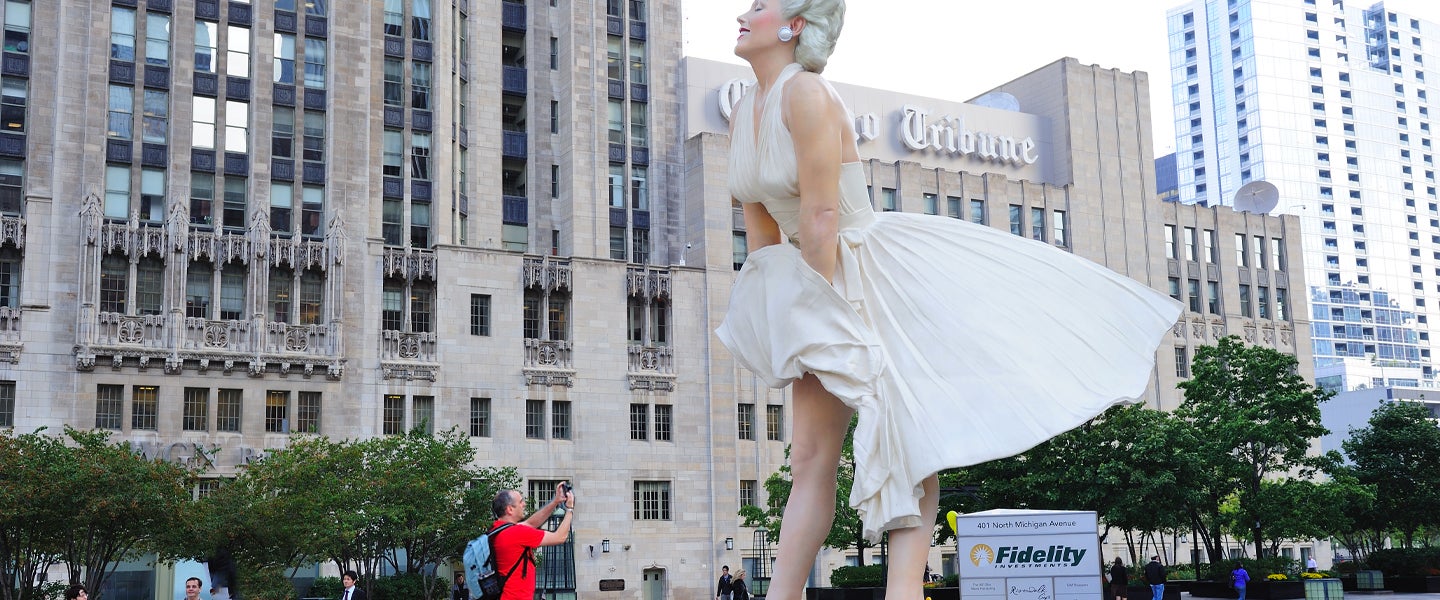In the lively public sphere that is the bodybuilding.com forum, user cybersk8er confesses a personal desire. “If I see a hot chick with a skirt on walking by, I get immediately turned on by her legs, but if I see her with shorts, it’s not as attractive,” he explains. “I have a fetish for voyeuristic pleasures such as upskirts and smelling panties. I have a girlfriend, but I do not want to let her know that I like upskirts. Is this weird?” The replies aren’t consoling. “Fuckin’ pervert,” one user retorts, whereas another calls him a freak, “[but] not in the good way.” Perhaps the most cutting reply of all, though, comes from HCN91: “People like you is the reason why we can’t have nice things,” he says, “fukning phagoot [sic].”
The upskirt fetish has a poor reputation, and perhaps rightfully so, given that it’s most often associated with non-consensual recording or photographing of unsuspecting women and girls in public. The widespread revulsion caused by perpetrators like disgraced urologist Adam Levinson suggests that there’s a firm, well-deserved stigma associated with this act. It’s strange, then, to remember that, not so very long ago, mainstream tabloids and women’s weekly magazines would regularly and openly publish upskirt paparazzi shots of female celebrities.
The 2000s were an unfortunate decade for many reasons, but one of them was the ubiquity of these sorts of pictures, featuring stars like Paris Hilton and Lindsay Lohan flashing their Brazilian waxes as they gracelessly exited their vehicles. Photographers would crowd cars containing female celebrities and wait poised as they removed themselves, attempting to capture the golden egg of the unscrupulous paparazzo: the pussy shot. In women’s magazines, the genitals might be covered with a dignity-saving, post-production star, but on the recesses of the internet, they would be published in all their (lack of) glory.
Some celebrities, like Hilton, had a blasé attitude about this phenomenon, and didn’t seem overly concerned with hiding their freshly waxed genitals from the cameras. (Hilton’s symbiotic relationship with the press is well-documented.) Other more private stars, like Emma Watson and Beyoncé, were targets precisely because of their guardedness. No one was off limits, and famous women were hounded relentlessly on the off-chance they’d unwittingly expose “the goods” to photographers, who could earn tens of thousands of dollars for revealing shots. Tabloids and magazines would then publish the pictures and frame the captions around how stupid, vulgar and careless these women were, simultaneously ogling and shaming them.
It’s not hard to see why upskirt shots of women hold illicit appeal for certain viewers, and when the celebrity involved is participating knowingly — as in Marilyn Monroe’s iconic (and staged) flying skirt moment as she stood over the air vents on Lexington Avenue — there’s little harm done. But the invasion of privacy and lack of consent that characterized the upskirt shots in the 2000s wasn’t a barrier to consumption — for some, it was part of the appeal, and the hatred of women was palpable. “Britney’s sin slit looks a little lopsided in this upskirt photo, it must have been smacked around pretty hard the night before,” reads one caption in an online round-up of the “Top 12 Celebrity Upskirt Pussy Slips,” which I won’t link to. Another is just as charming: “Try to keep down your lunch on this one, as the creature known as Beyoncé flashes her mangled mocha manhole in the upskirt photo above.”
It’s hard to believe how mainstream these upskirt photos were, and how they curiously disappeared from the cultural landscape without much fanfare. In an excellent report for BuzzFeed News, Claudia Rosenbaum chronicles the rise and fall of the entire paparazzi industry, beginning in 2000 when Us Weekly went from monthly to weekly and magazines like People, In Touch Weekly, Life & Style Weekly and OK! became dominant cultural forces, all of which were vying for “Stars: They’re Just Like Us!” shots that could fetch tens and even hundreds of thousands of dollars for cunning photographers. As veteran paparazzo Giles Harrison told BuzzFeed, “We were making more money than we knew what to do with.”
Then the Great Recession of the late 2000s hit, frivolous $5 magazines became a luxury most consumers couldn’t justify (especially with the rise of free celebrity gossip online), and media budgets for celebrity shots — upskirt or otherwise — plummeted. In-house paparazzi teams were laid off; Getty reduced royalty payouts to freelancers; and suddenly photos that once commanded tens of thousands of dollars were barely worth the trouble it took to get them.
And it was becoming much more trouble. Stars were beginning to fight back against the relentless hounding by the press. In the case of Britney Spears and Kanye West, the fight was quite literal, involving umbrellas and headlocks. Others like Halle Berry and Jennifer Garner engaged in a “won’t someone please think of the children” fight for public sympathy, which paid off when anti-paparazzi legislation was passed. Finally, the advent of social media sounded the death knell for the industry: With the rise of platforms like Instagram, celebrities could retain tight control of their own images and cut out the middleman photographers.
But while these economic, legal and technological pressures help explain the downfall of upskirt celebrity shots, social pressures no doubt played a role as well. The 2010s has been an era of SlutWalks, “consent is sexy!” feminist sloganeering, women’s issues blogs, body positive consumerism and the #MeToo movement. There is now a near-mandatory expectation that everyone identify as (a certain kind of) feminist and denounce the most boorish displays of sexism — hence the days of the upskirt celebrity shot were numbered.
Fast forward to 2016, when at the launch of #HeForShe Arts Week, “a celebration of gender equality in the arts” in New York, Emma Watson reminded us just how creepy these shots were — and what was at stake. “I remember on my 18th birthday, I came out of my birthday party and photographers laid down on the pavement and took photographs up my skirt, which were then published on the front of the English tabloid [newspapers] the next morning,” she said. “If they had published the photographs 24 hours earlier they would have been illegal, but because I had just turned 18 they were legal.”

